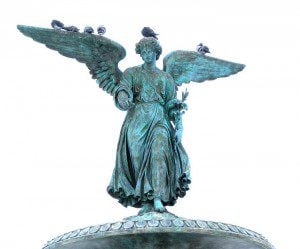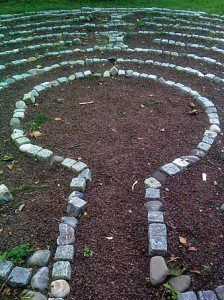 The pool of Bethesda is famous. Its name has been borrowed by countless hospitals and medical centers, and by a town in Maryland that is a bedroom community for WashingtonDC. One of the distinctions of Bethesda, MD is that it has one of the longest subway escalators in the world. To come off the bright street to be confronted by that steep descent into darkness is very much like looking into the mouth of the Underworld. Bethesda is the right name for the subway station, as well as for all the hospitals.
The pool of Bethesda is famous. Its name has been borrowed by countless hospitals and medical centers, and by a town in Maryland that is a bedroom community for WashingtonDC. One of the distinctions of Bethesda, MD is that it has one of the longest subway escalators in the world. To come off the bright street to be confronted by that steep descent into darkness is very much like looking into the mouth of the Underworld. Bethesda is the right name for the subway station, as well as for all the hospitals.
You can view a splendid winged version of the angel of Bethesda, designed by Emma Stebbins, at a fountain in Central Park in New York City. However, this feminine angel is very unlike the one that troubled the waters at the original Bethesda.
You may have heard of him, as I first did in Sunday school, in the King James version: “For an angel went down at a certain season into the pool, and troubled the water; whosoever then first after the troubling of the water stepped in was made whole of whatsoever disease he had.” [John 5:4]
His presence explains the “multitude” of the sick, the lame and the impotent who are gathered around the pool at Bethesda, in hopes of healing, when Jesus arrives and performs one of his best-known miracles. Jesus cures a lame man by telling him to get up and walk. The lame man had been waiting by the pool for years in hopes that some day he would manage to get in first when the waters were troubled, but the moment had always been snatched from him.
In modern revisions of the New Testament, the angel of Bethesda disappears. The whole verse that presents him has been excised from the New Revised Version, the New American Bible and the New Jerusalem Bible; you’ll only find it in a footnote in minuscule type. The learned justification for this blue-penciling is that John 5:4 is missing from the earliest Greek manuscripts of the Gospel of John, and contains expressions that do not conform to its style. [cf Andrew T. Lincoln, The Gospel According to John. New York: Continuum, 2005, p.206n.4]
Without the angel, the mystery of why a multitude is waiting for the troubling of the waters is unexplained. Are all these people simply convinced that the waters of Bethesda have healing properties that are augmented when they gush more strongly from the nearby spring that feed them? We can’t understand what is going on here until we grasp that before textual scholars deleted the angel, early Christians deleted a pagan god, who was literally born from dreams and healed through dreaming.
French scholar Antoine Duprez made a careful study of the archeological evidence from Bethesda that suggests at least three stages of religious activity around the Pool of Bethesda. The earliest is a complex of pools and grottos from the second century BCE. This was likely a place of sacred healing, but the evidence does not tell us in whose name it was conducted. The structures of that time were destroyed, along with much of Jerusalem, in 70 CE. “They were replaced by a sanctuary of the healer-god Asklepios-Serapis”, a composite deity. This sanctuary was replaced in turn in the fifth century by a Christian church commemorating the miracle of John 5. In the tenth century, the Crusaders built yet another church, dedicated to St. Anne, on top of all the above.
Who was first worshipped at the site? Duprez argues that given the popularity of the Asklepian religion in Syria, Palestine and Egypt in Hellenistic times, it is entirely likely that a healing temple was operating at the gates of Jerusalem, near the Roman garrisons.
Against this backdrop, textual analysis of John 5 suggests that a creative editor took an older miracle story and relocated it at Bethesda, the site of a popular pagan temple of healing (just as churches were often built at pagan places of power) in an effort to claim the glamour of the old religion for the new one. In this analysis, John 5 is the first testimony to the struggle between primitive Christianity and the religion of the healing gods, which centered on dreaming at places of power where prayer had been valid.
Adapted from The Secret History of Dreaming by Robert Moss. Published by New World Library.

